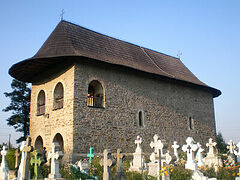Source: Orthodox History
June 24, 2022
Today I’m going to try to tell the story of how the Romanian Orthodox Churches became independent. You’ll notice that I said “Churches,” not “Church” – that’s because, in the 19th century, there were no fewer than three distinct, independent Romanian Orthodox Churches:
- The “Danubian Principalities” of Wallachia (aka Muntenia, in the south of modern Romania, including Bucharest) and Moldavia (easternt)
- Transylvania (central Romania)
- Bukovina (northern Romania)
During the first half of the 19th century, all of these churches were under the jurisdiction of the Ecumenical Patriarchate. There were other Romanian regions in addition to these – for example, Bessarabia, in the east, was annexed by the Russian Empire in 1812. Wallachia and Moldavia, which are kind of the core historic regions of Romania, were part of the Ottoman Empire and were ruled over by ethnically Greek princes known as “Phanariots.” The earliest stages of the Greek Revolution were launched from these regions, with support from the local Phanariot princes. The Ottoman government responded by replacing the Phanariots with new rulers, more loyal to the Sultan. This was really the beginning of the breakaway of the Orthodox Churches of the Danubian Principalities from the Ecumenical Patriarchate.
... Read the rest at Orthodox History.
Follow OrthoChristian on Twitter, Vkontakte, Telegram, WhatsApp, MeWe, and Gab!




